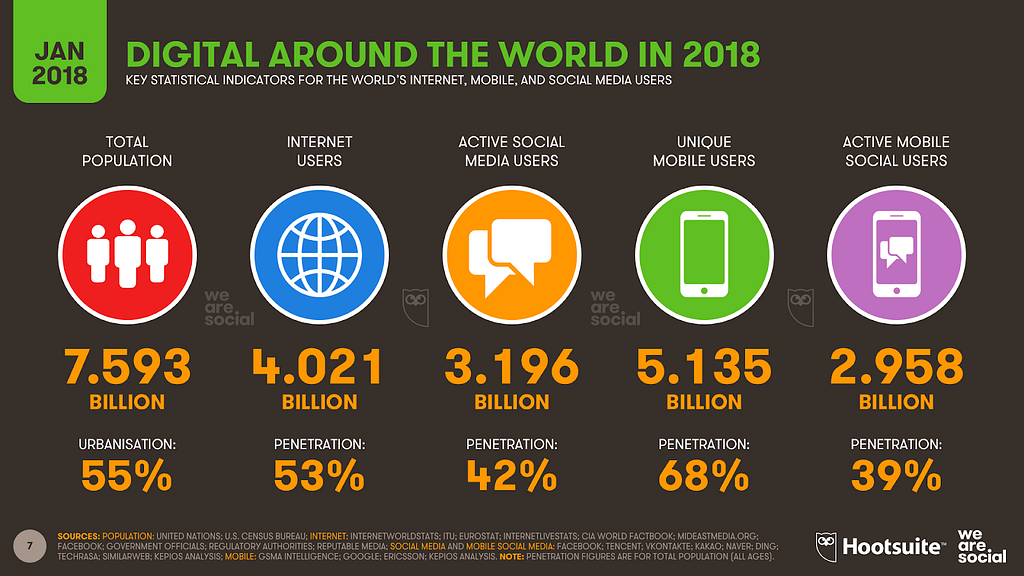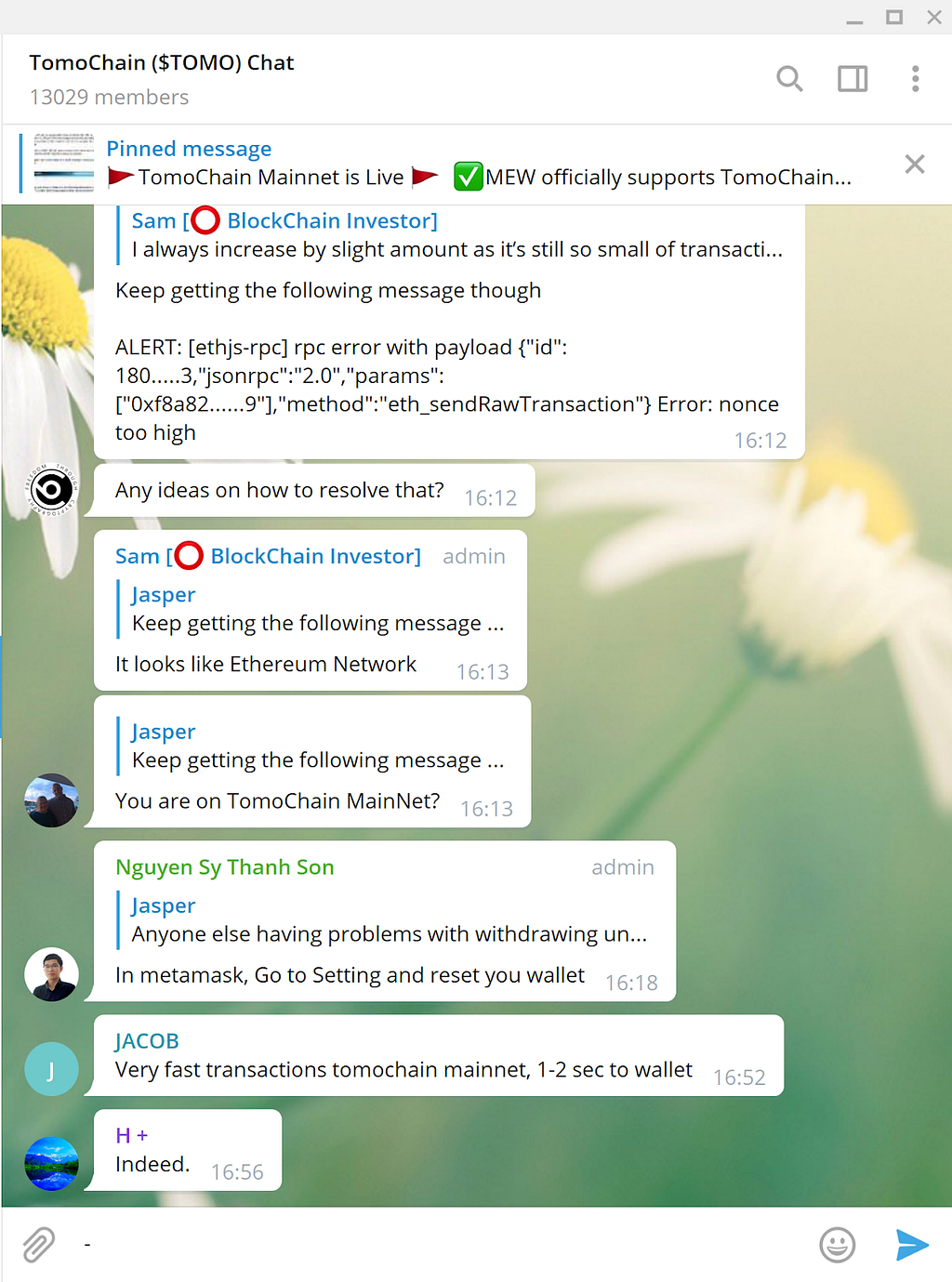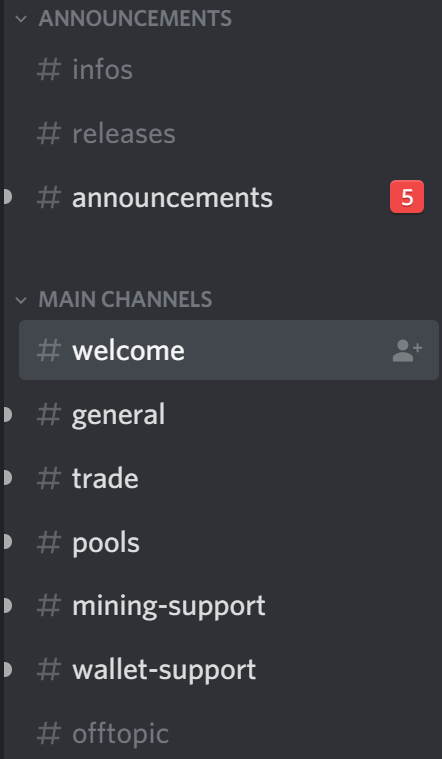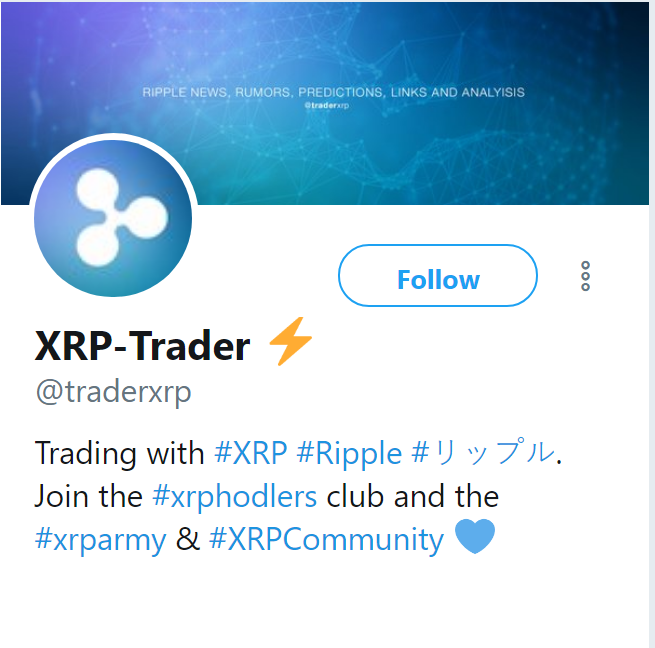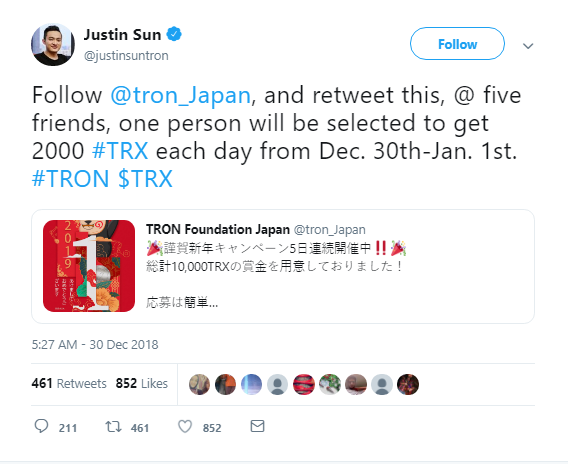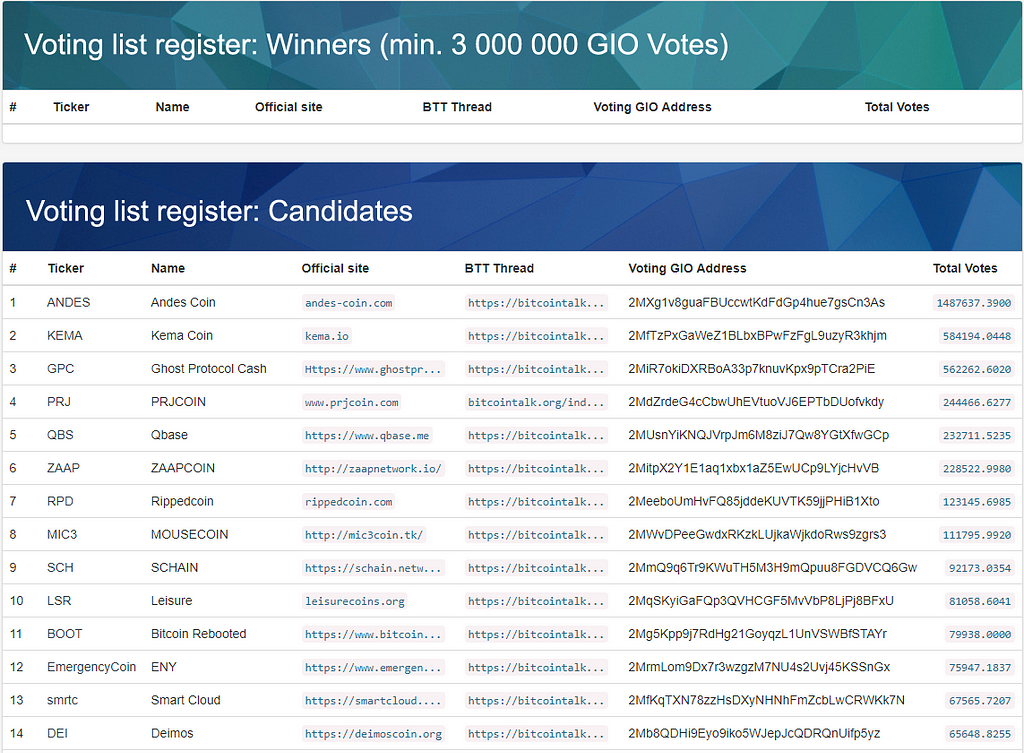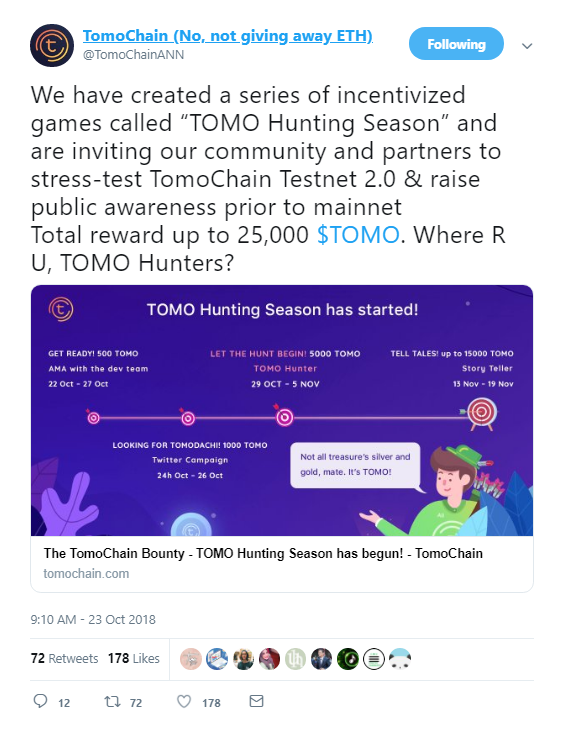Latest news about Bitcoin and all cryptocurrencies. Your daily crypto news habit.

What is Community?
Throughout history, communities have played an intrinsic part in how humans come together to share ideas, collaborate and align themselves with each other to incorporate a common identity.
Community can be defined as:
“The condition of sharing or having certain attitudes and interests in common.”
Since the dawn of time it has been embedded in our DNA to naturally form tribes, factions or groups in order to work together with like-minded people and produce better results than if we were to operate alone.
Fast forward to 2019 and communities are as prevalent as ever in today’s society but with one major difference — the majority of our social groups have now been digitised and the largest communities we form are now online.
The invention of smartphones has now provided us with access to hundreds of thousands of unique groups or social networks, all of which are accessible from the palm of our hand.
With the introduction of WhatsApp, Facebook and Snapchat groups, it is fair to say that we spend more time in group conversations than we do speaking to individuals. When we share news, gossip or memes we first head straight for our group conversations and want to share them with our small and personal, tight-knit community. This is signifying a huge shift towards online group culture.
The graphic below, from Jan 2018, demonstrates the current digital landscape we live in:
As you can see, over half of the world now have have access to the Internet and nearly 40% of the entire population are socially active on their mobile phones. As with any big movement in humanity over the last 100 years, technology is at the core of our progression as a species.
So where does Crypto and BlockChain, arguably the most revolutionary technologies since the invention of the internet, fit in with this new shift in the paradigm of communication?
Community in Crypto
The world of Cryptocurrency is no different from any other communications network. There are a myriad of communities, sub communities and private communities spread across a variety of social platforms such as Twitter, Telegram, Discord, Slack, Reddit and the BitcoinTalk forum. Each one of these social networks has a distinctly different feel and vibe to it and this varies from platform to platform, as anyone who has been in Crypto for a long period of time will know.
Where Twitter is very fast-paced with short snippets of news and charts, you have the complete opposite in Reddit which is much slower paced and more about sharing personal opinions and ideas.
Telegram is mainly for coin communities who just want a relaxed space to hang out, discuss their project and it’s news, goals and roadmap.
Interestingly you will occasionally find Community Managers who are usually just members of the community that will volunteer, often unpaid, to act as Administrators/Moderators for a project’s Telegram channel. This is because they believe and support their coin so much that they are willing to take on this role on a voluntary basis, dedicating their personal time and energy to contribute to the future success of the company.
The BitcoinTalk forum was created by Satoshi Nakamoto in 2009 and is legendary in the community. It still maintains it’s classic forum style and for many projects this is the first port of call to release news via an ANN post (Altcoin Announcements). This is also where the now infamous “HODL” meme originated.
Slack and Discord are also a favourite with the Crypto community as you will often find the developers, marketing team and people close to the project hanging out here. The majority of projects using these platforms will not have had an ICO but perhaps opted to start their project using a pre-mine instead. It is in here that you can get a real sense of community for a project, as you can see the team engaging with the general public and answering any questions that they may have.
These platforms offer a much larger variety of discussion with their sub rooms so you can easily find the information you are looking for. It is also here where you are most likely to come for technical help such as setting up your wallet, masternode, staking or mining pool.
Many coins in Discord also employ a ranking system, often in a hierarchical format, for its members which show their contribution and dedication to the project. The more active you are in and the higher quality service you provide to the project will see you ‘level up’ in the community.
If you are familiar with live streaming, whether it be on YouTube, Twitch, Instagram or Facebook, you will be aware that you can interact with the streamer live and feel like you are a part of the experience. Similarly when you choose to hang out on Slack/Discord/Telegram you are in direct contact with the core members of that team — the developers, marketing team and community managers. You will even see the CEO jump into a Telegram chat or occasionally partake in an AMA on Reddit from time to time in order to engage with the community in real time.
In other industries it is rare to be able to connect with the team behind a company in such an interactive and engaging manner and because this industry is still very much in its infancy you get the opportunity to do this. Whether you took part in a pre-sale ICO or you are supporting a small community backed premine coin, you can watch a project grow from conception to its first wallet, its first exchange, to a Coinmarketcap listing and seeing it complete that first milestone on the roadmap.
Many will follow this journey closely and live and breath for a project as if it were their own creation — tweeting, posting or sharing updates as they go across multiple platforms in order to attract the most reach and potential new investors to help bolster their coin.
In addition to Slack, Discord and Telegram it is not uncommon for people to ‘brand’ their accounts on Twitter. We are all familiar with Ripple’s famous #XRPArmy hashtag for example and followers that choose to put their coin’s cashtag in their profile name in order to show their support. When you brand your social media account with a hashtag or a cashtag it’s not too different from wearing the jersey of your favourite sports team.
However, the stark difference between supporting your favourite sports team and being a supporter of a cryptocurrency project is that you, as a member of the community, also have the opportunity to be a part of the team itself. By creating articles, producing content, completing bounties, mining, running a masternode or simply sharing news and information about your coin, you are essentially attempting to influence and convince others to come and join you and your team.
Ways that projects engage the community
There are many ways in which a project will try to gather interest from new investors in their token, as well as encourage existing holders and members of the community to become more active. I will briefly outline the main ones below:
Airdrops:
Projects will distribute free tokens to users on a specific pre-announced date. To qualify for an airdrop, the user usually completes a number of tasks that are designed to generate awareness and buzz for the project. Alternatively, airdrops could be a surprise and used as rewards for existing holders.
Giveaways/Competitions:
These are usually simple tweets encouraging people to retweet and tag friends to win the chance of free coins. This is a simple and effective strategy to spread awareness of the project and reach more potential investors:
Bounties:
There are many forms of bounties available. Whoever completes these bounties will be rewarded with the project’s tokens. Common bounties include translating white papers/technical documents into different languages, producing articles or videos, discord referrals and finding bugs within the code.
Exchange voting:
Although no coins are offered as a reward, projects will often attempt to rally their community together in order to get listed when an exchange runs a voting competition. New exchanges can provide liquidity, visibility and exposure in order to attract new investors which may, in turn, increase the demand and price of the coin rewarding existing holders by making their holdings worth more. A well known voting competition you may be aware of is the Binance Community Vote. Below is an example for Graviex:
Testing:
Some projects will encourage users to download wallets or testnets and try to stress test their blockchain and report any bugs as you can see below from TOMO’s “Hunting Season” campaign:
Interviews
Having now explored the general notion of a Blockchain community and the methods that are used in developing and maintaining a core following, I was eager to interview some project representatives who I feel have had success in this area. I spoke with the following representatives:
Marton Ven — CMO of TeFood — $TFD
Saber Maram -> CEO & Founder of BitTube — $TUBE
Rick Howe -> Founder & Project Manager (Technical) of Zero — $ZER
Alex Le -> Community Manager of TomoChain — $TOMO
NoreiThe -> Community Manager of Stellite — $XTL
Before I begin, it’s worth noting that each of these projects is different in their own way in terms of their inception into Crypto. I will briefly outline this below:
Te-Food — ICO — $19.1mil
BitTube — No Premine, no ICO
Zero — No Premine, no ICO
TomoChain — ICO — $8.5mil
Stellite — Premine — 0.6%
What does community mean to your project?
Rick Howe, the founder and project manager of Zero, describes their community as a “building block” and the “motivation to move forward”. I can tell by the way he formats his responses and the way he speaks passionately about this that this is something he holds close to his heart. He tells me that the Zero team are “fully motivated by the community to move forward and keep developing because the community is the most precious building block for us.”
Echoing this sentiment is Saber, the CEO and founder of BitTube. He states that “Our growth to date is purely organic, for us every single TUBE is vital as every single user is. That’s why establishing a robust community is one of our main goals, as it lays the bedrock of our future success.”
NoreiThe, Stellite Community Manager, tells me that “The majority of the Stellite Team are coming from the community itself and thus making the community our primary source of team members” and because of this the team “really value our community because they provide us publicity/exposure, they help people with their issues when we are not around and provide us with important feedback on the project itself.”
Te-Food is a unique project in that their objective is to ensure that the food we consume is produced, tracked and delivered to us to eat safely and without fear of disease or being contaminated. Marton, CMO of Te-Food, tells me that “Governments often don’t know “how to require” food companies to provide traceability information. And consumers often don’t know that they could put pressure on food companies with their requirements.” He adds that Te-Food aims to tackle these big issues.
I believe that in life kindness and compassion is often reciprocated and the fact that Te-Food’s mission is of benefit to the human race means that they naturally attract a healthy and constructive community. Marton goes on to tell me that “We think that having a caring community and reminding them that they have the right to know what they eat is an important task.”
Alex, Community Manager of TomoChain, states that the members of the Tomo community are not only “investors” but also succinctly lays out what other roles they play:
- Our great supporters as they actively spread the news, and bring people together to advocate and support each other in the fight to overcome threats and FUD.
- Our judges as they keep questioning and giving us valuable feedback regarding the community and product development, which gives us many awesome insights.
- Our friends as we share stories and hopes that we have been holding about life and crypto/blockchain expectation.
- Part of our team as they don’t hesitate to educate new members about TomoChain, help each other to understand our project deeply as well as notice us whenever the unexpected occurs.
We are proud to have such a vibrant and active community beside. We do our best to keep our community growing organically and sustainably by future community engagement activities.
What in your opinion makes a robust Crypto community?
Whether it be feedback, constructive criticism or ideas for future growth It is clear that each of these projects cares deeply for and truly values the members of their community and it’s investors . So what exactly do they believe makes a strong and robust group?
Saber, BitTube, tells me that “What we think makes a strong community is members understanding the value of the project, namely why user friendliness, accessibility, distribution, demand, utility etc are all equally important. A strong community would bring new leads and engage with the project”. He goes on to say “A healthy crypto community should not shill the coin just for speculation. What we observe is the price doesn’t follow technological progress and all the sleepless hours developers put into the project.”
Marton, Te-Food, believes that “Each project finds the community which resembles the values of the project.” He is very modest about Te-Food’s already impressive achievements in the space and honest as he tells me “There are people who resonate to constant hype, and there are others who value humble work. We think that the strongest statements of a business are the achievements. You can always argue hype, but it’s hard to argue achievement.”
He summarises by stating that “Transparency and honesty are also important from the project”.
Rick, Zero, also credits transparency as a core foundation to a robust community as he tells me, “Transparency and activity makes for a robust crypto community whilst keeping the community engaged and satisfied”.
NoreiThe, Stellite, is of the opinion that “People hang around in the social channels even in bad times (price falls, FUD etc) and that they stay calm, decent and constructive” are of key importance.
Alex, TomoChain, says that they believe “two-way communication is a key factor” and that “avoiding questions is not a good path to take”. In my view this is a solid approach as it means that they are keen to tackle any issues head on. This can be seen by Long Voung, CEO, recently retweeting how TomoChain successfully defended against a spam attack — making it’s holders aware before any FUD could occur.
Alex finishes by stating “We are aware that if anyone brings any question to us, it means (at least) they care and we succeed in term of having their interest. Now it is our chance to prove that we are well-deserved. Other members and parties also understand and get more involved into the project.”
How do you keep your community satisfied and engaged?
Engagement across any sort of social platform is a key metric for any brand, advertiser, business or influencer. So how do these project’s keep their communities engaged?
Marton thinks that, “In the case of food safety, honest and clear communication is the most important thing. When people learn what we do, they understand why is it important for the world.”
As previously discussed Alex emphasises that Tomo “Listen to the community and get back to them by actual actions.” And “Create meaningful value out of the project and distribute it by making progress in the project development as a whole.”
NoreiThe says that Stellite “Keep things real, honest and include them in some decision making” and they achieve this by asking for feedback(tests, opinions etc) from them and as a team personally talk/chat/laugh with the community.”
Saber encourages the community to “have first-hand experience with our apps so they can comment and discuss on our posts about features and developments” and from a social media perspective “We share relevant topics and aim to build engagement. In our case, this year we are migrating to a new social-style video platform, which will be extremely helpful for us to engage with our own community, without relying on third-party platforms.”
Rick likes to keep the Zero community engaged by “activating the community in some decision making and organising a lot of Twitter giveaways, voting etc” but also states that “We’re constantly keeping the community in the loop. Everything we do, we do with them. We think that transparency is the most important thing, especially in crypto space.”
Do you believe that having a strong community directly impacts the success of a project?
Although by now it is fairly evident based on the previous responses that there is a strong correlation between a project succeeding in this space and how robust their community is.
Marton tells me that “The success of a project is adoption, and communities can directly or indirectly help adoption.” And that even more impressively that they have actually “Met some of our partners through our community.”
Alex argues that “A project can’t go further and faster without the receiving feedback from their audiences and users because they don’t know where to improve and develop.” Whilst Saber is clear in his words that “Having a strong community definitely has an impact on the success of the project.”
Saber goes on to say that “Luckily, the BitTube community goes beyond ‘crypto enthusiast’ with many people following us for the utility of the project and this is what set us apart many other projects. This is also what will give strength to the core of the community in the long term: we don’t necessarily aim to build a ‘crypto community’, we aim for mass adoption.”
Rick states that “having a strong community is paramount to the success of the project, especially in cryptocurrency” and that “they’re the most important part of cryptocurrency’s lifespan, the use case, without a use case, a cryptocurrency has no reason to exist, that’s why we strive to increase our trusted community and with that, gain more use cases & more users that pay with/utilise zero.”
NoreiThe even goes so far as to say that the support the Stellite team receive from their community “really helps to recharge your energy lost in development” and that “It boosts morale for sure.”
Regarding fud — what measures and precautions do you take to combat this negative press when it occurs in order to keep the community happy?
One of the key tests for any community is how they and the project respond to FUD. It is inevitable that at some point in a coin’s existence they will encounter some level of FUD or negative press.
A key theme throughout these interviews has been transparency and honesty.
Rick tells me that Zero’s idea is “To build up a strong reputation over time with the community & outside world through being transparent, positive word of mouth (recommendation), completion/quality of work delivered on time. All this works together to keep the project legit and helps defend from outside FUD.”
NoreiThe is of the opinion that “you can not really fight FUD”. However he does believe that “For a project to be successful it needs to be based on the quality of the product and not by the ability of the devs to manipulate. The only precaution you can have is honesty and be on point against people spreading FUD.”
Saber says that BitTube “Actually enjoy some FUD now and then, as it’s a good exercise for anyone to engage in serious discussions and formulate rebuttals. The key is communication and again, being transparent!” However he stresses the point that “We are transparent with our community, giving as much details and information as we can in order to make sure we are all on the same page.”
Marton believes that, in Te-Food’s experience, one of the key reasons is “lack of knowledge” however he goes on to admit that “This is understandable as there are a lot of people in crypto without business or technology experience. In most cases, we can clarify their concerns.” He also states that tribality is an issue. He has addressed this in an article here
Finally Alex and the Tomo team summarise how FUD is caused and how they react to it:
“1. Untrustworthy/out of date sources
2. Lack of information
3. Misunderstanding/Miscommunication with the team
4. Person/group of people who try to ruin the project’s reputation on purpose
When it comes to 1,2 and 3, we are open to discuss and communicate with until the FUD is completely wiped out.
In regard of 4, the team and community will together shut them down and prevent their bad impact from others, depending on case by case.”
NB, the above interviews were edited from the originals. You can find the full transcripts here
Exclusive Interview — Michael Nye
Finally, I spoke with Michael Nye who is extremely experienced in the space, having interviewed many projects ranging from startup to firmly established. He also runs his own marketing company, Elevated District , that specialise in bringing social media and community solutions to blockchain startups.
Given this, I felt that Michael would be in the perfect position to give his comments and provide some valuable insight on this subject:
“I think community is the most important factor of Blockchain and Cryptocurrency. Whilst the technology is super cool, relevant and important the fact is community is what brings us all together — it’s what fuels us, what keeps us going in this space. It means everything to me — people coming together to share ideas, feelings and thoughts is what really matters and is what will move the whole space forward. It is entangled and and entwined with progress in the space.
I think what makes a robust Crypto community is people that agree and disagree with each other but do it in a healthy way where they can evolve and step into new thought patterns, ideas and concepts based off of conflict. Right now in our community we have positive and negative conflict, however with positive conflict you can have resolution and evolution.
Personally I just keep talking to people and sharing my thoughts and opinions. I keep doing what I like to do which is creating conversations with people and explore and share ideas.
I believe it is crucial for a project to have a strong community and one that believes in the them beyond the price of the coin. This is what I talk a lot about in terms of my marketing company, Elevated District. I think that having a strong community that cares about you regardless of whether your coin will go up or down in value is what really matters. Too many projects right now has the support of a community that only cares about them because they have the potential to go up and price and they could make money. As soon as that happens the community will abandon or forget about the project. The project needs to be of value to the community in more than one aspect.
For me in terms of my personal community I have people that hate on me all the time. Most of the time I just ignore it unless it something that is taking shots at my integrity. I take my integrity very seriously, it’s one the things I value very highly in terms of what I’ve built and what I am building. So I will be very clear if I disagree with these people in this situations.
For a company I believe they constantly need to be in communication with their community. Negative press occurs when there is a lack of communication and a lack of transparency. You need to be able to do this before you even have a community as you already setting yourself up for failure.”
You can follow Michael Nye here and his company website Elevated District
Conclusion
In my previous articles about doxxing and marketing I refer to the fact that we are still very much in the infancy in this mostly unregulated space and there are many people who have lost money from situations such as projects exit scamming.
I selected the above projects for this article because I believe that they meet all of the criteria in maintaining a strong and engaged community that they genuinely care for, by being honest, open and transparent about how they operate as a company.
Most importantly what the successful application of this mentality will do is help build trust. Ultimately you are investing your own hard earned income into a project and you have to trust that they are always operating in the most sensible and efficient way in order to protect you and your investment.
Each of these projects has a very strong leadership team and as with any organisation, the attitude and mentality starts at the top and cascades down to every employee. This in turn has a calming, relaxed and positive effect on the holders and members of the community.
So you may be asking yourself — Where does this leave me an as an investor?
After you have researched what a project actually does and if it has a legitimate use case, as well the token metrics; you will need to study the other fundamental aspects that I have covered in this article.
Below are what I believe to be the five key pillars of success when investing in a Cryptocurrency. Please feel free to favourite this link or print this page off as a reference when you are researching a coin:
Communication
Are the team active on social media? Do they share regular updates? Do they run Q + A’s? How easy is it to get in contact with a member of the team? Do they have a mailing list? Do they send out newsletters? Is the contact information available on their site? Do they actively request feedback? Do the community managers respond to all the questions asked on Telegram/Discord? Do they quickly and adequately address FUD?
Transparency
How exactly are the Premine or ICO funds being allocated? What’s the lock up period for tokens to be released to team members? Are the Premine addresses available in the blockchain explorer? Do the team communicate if they are behind on their roadmap or won’t hit a goal on time? Do they announce if their chain has been attacked? Do they share information with the community as soon as they receive it?
Competency
How often is the GitHub updated? Does the wallet have any bugs? How was the transition from testnet to mainnet? Were you fully informed of the process and with enough time beforehand? How often is the wallet being suspended on an exchange for maintenance? How often is the website updated?
Support
How quickly can you get an answer from a member of the team? Are there easy to use guides available for the setup of masternodes for example? Is technical support readily available? Do they have YouTube walkthroughs?
Gratitude
Do they show thanks and appreciation to the community? Do they participate in airdrops for current holders? Do they run giveaways or competitions for holders to win more coins?
— — — — — — — — — — — — — — — — — — — — — — — — — — — — — — —
If you would like more information about any of the projects mentioned in this article please see below for additional information including where to buy the tokens:
Social: Telegram, Facebook, Twitter, Reddit
Social: Telegram, Facebook, Twitter, LinkedIn, Reddit
Exchanges: Kucoin, Hotbit, Gate.io
Social: Telegram, Facebook, Twitter, Discord, Reddit
Exchanges: Bittrex, Upbit, TradeOgre, Livecoin
Social: Telegram, Community, Twitter, Discord, Reddit
Exchanges: TradeOgre
Social: Telegram, Facebook, Twitter, Discord, Reddit, YouTube
Exchanges: Cryptopia, Crex24, TradeSatoshi
Thank you for reading and I hope you enjoyed this article. Please feel free to support me below
Alex Libertas
Email me for Enquiries here
Follow me on Twitter
Follow me on YouTube
Follow me on Medium
Follow me on LinkedIn
ETH Tip Jar
0x34eD9009961C9562288181C6dA5A13e4D88096CC
BTC Tip Jar
13YRCqNjujXD1rNBwikDjwjvGDPvzr36AF
Disclaimer — All views and opinions expressed in this article are my own. I did not receive any form of payment for this article.
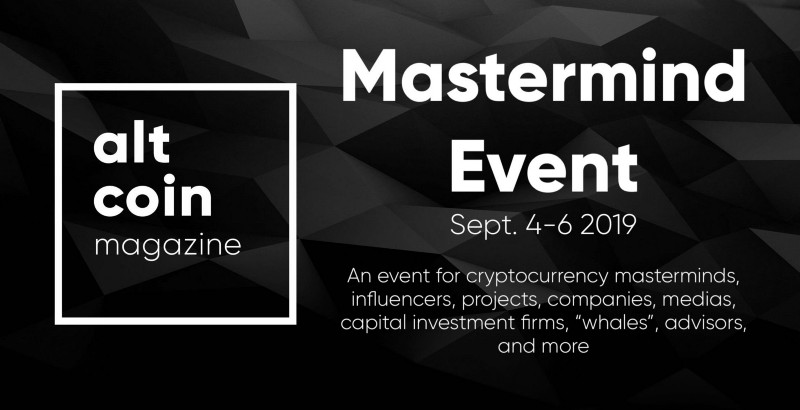 https://altcoinmagazinemastermindevent.eventbrite.com
https://altcoinmagazinemastermindevent.eventbrite.com
Before moving on, make sure to press follow, leave a clap or 46, share today’s highlight and if you missed the last article, click here.
Read about the Altcoin Magazine Mastermind Event here.
Follow us on Twitter, InvestFeed, Facebook, Instagram, LinkedIn, and join our Discord and Telegram.
The purpose of ALTCOIN MAGAZINE is to educate the world on crypto and to bring it to the hands and the minds of the masses. This article was written and composed by Mohammad Musharraf on ALTCOIN MAGAZINE.
The Importance of Community in Crypto was originally published in Hacker Noon on Medium, where people are continuing the conversation by highlighting and responding to this story.
Disclaimer
The views and opinions expressed in this article are solely those of the authors and do not reflect the views of Bitcoin Insider. Every investment and trading move involves risk - this is especially true for cryptocurrencies given their volatility. We strongly advise our readers to conduct their own research when making a decision.
